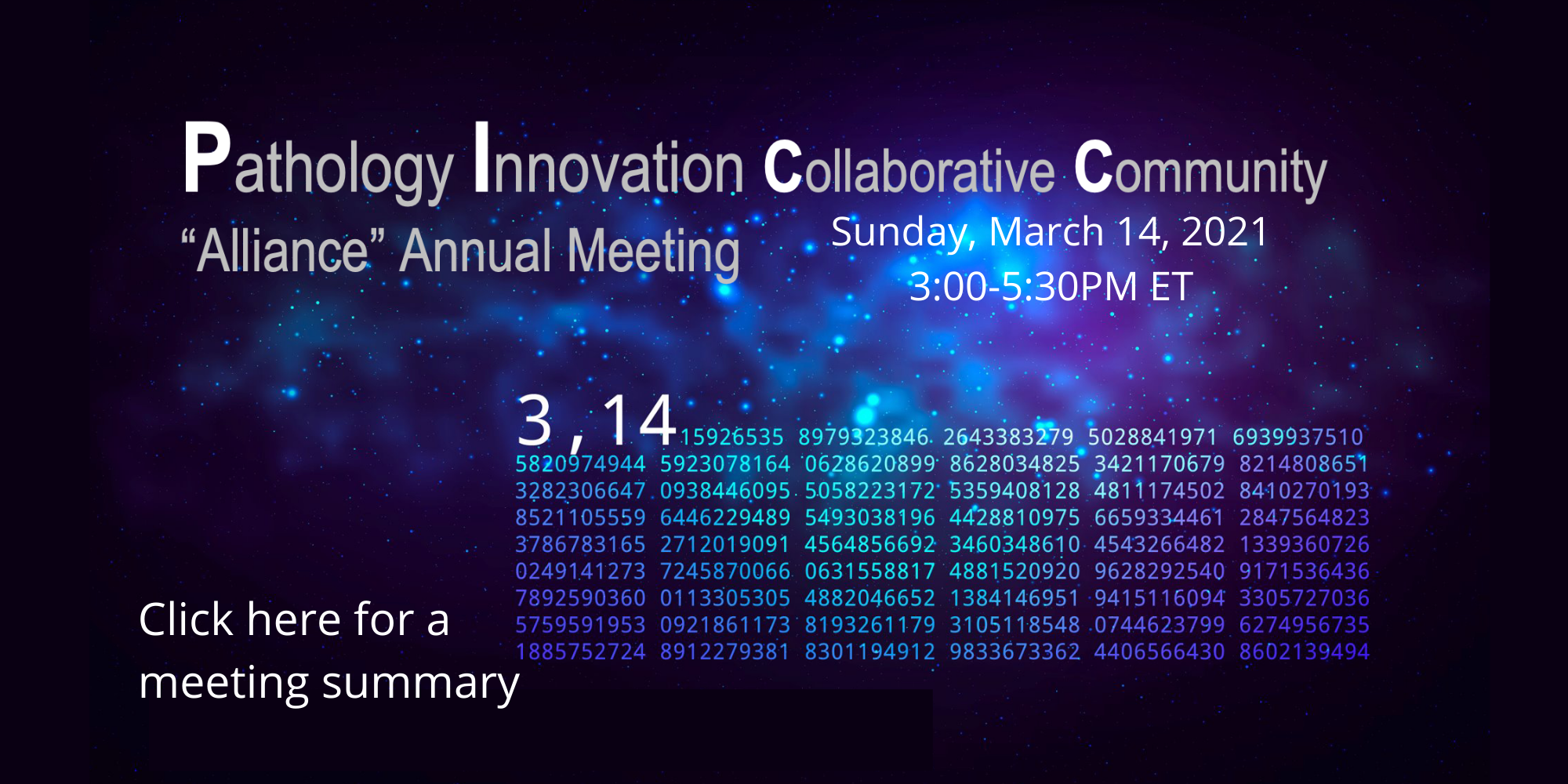Pre-Analytics
The workgroup is placing emphasis on pre-analytical variables. The workgroup emphasizes the need to standardize human factors to create comparable samples from lab-to-lab for use in algorithmic/ML applications. Human factors are key determinants of pre-analytic variability (e.g., staining intensity, control slides, staining techniques, fixing/mounting, scoring, etc.). The group is trying to create a set of standardized guidelines and tools that offer protocols, instructions, definitions, and examples to a) establish valid scientific evidence that enables reliable assessment of pre-analytical variables, and b) provides a roadmap towards generalizability of AI/ML applications.
Key Elements, Next Steps, Timeline
Pre-analytical guidelines
Survey (Role/Responsibilities)
Pathologists (control slide to imaging)
Histologists/Lab director (control slide for tissue prep)
Pre-analytical Prioritization and/or key requirements are identified (Tissue, Imaging, Ground Truth)
Results feed to Whitepaper/Publications/Guidelines
Concerns & Problems
Risk that pre-analytical variables influence interpretive accuracy if poor quality input data is used (“Garbage in-Garbage Out” GIGO)
Poor ground truth data/imaging sets for innovation/technology development
Wrong treatment provided to patient if decision was based on pre-analytical mistakes
Value Proposition
Guides manufacturers on quality control requirements
Interpretative accuracy improved by controlling variability via standards
Improved pathologists’ concordance
Enables the objective assessment of slides across different laboratories
Harmonization of efforts across other Alliance projects
Implications & Efforts
Education of impact of pre-analytical variation
Guidelines to promote MDDT submissions for for pre-analytical standards
Quality Control recommendations
Whitepaper
Guideline for control slide creation
Current Projects
News & Updates
Relevant Publications
Validation of Digital Pathology In a Healthcare Environment
Date: 2011
Authors: Lowe et al.
Link: Download PDF here
Beyond the H&E: Advanced Technologies for in situ Tissue Biomarker Imaging
Date: December 2018
Authors: Himmel et al.
Link: Pubmed
A Dataset and a Technique for Generalized Nuclear Segmentation for Computational Pathology
Date: July 2017
Authors: Kumar et al.
Link: Pubmed
An annotated fluorescence image dataset for training nuclear segmentation methods
Date: August 2020
Authors: Kromp et al.
Link: Pubmed
A High-Performance System for Robust Stain Normalization of Whole-Slide Images in Histopathology
Date: September 2019
Authors: Anghel et al.
Link: Pubmed
IHC Color Histograms for Unsupervised Ki67 Proliferation Index Calculation
Date: October 2019
Authors: Geread et al.
Link: Pubmed
Impact of pre-analytical variables on deep learning accuracy in histopathology
Date: July 2019
Authors: Jones et al.
Link: Pubmed
High-Quality Immunohistochemical Stains Through Computational Assay Parameter Optimization
Date: October 2019
Authors: Arar et al.
Link: Pubmed
Colorization of H&E stained tissue using Deep Learning
Date: July 2018
Authors: Samsi et al.
Link: Pubmed
Assessing microscope image focus quality with deep learning
Date: March 2018
Authors: Yang et al.
Link: Pubmed
A quantitative approach to evaluate image quality of whole slide imaging scanners
Date: December 2016
Authors: Shrestha et al.
Link: Pubmed
Validating Whole Slide Imaging Systems for Diagnostic Purposes in Pathology
Date: May 2021
Authors: Evans et al.
Link: Download PDF here
Group Leaders
Amanda Lowe
Amanda Lowe is Managing Director for Visiopharm Corporation and leads the US based team and all operations within the Americas. She received her BA from Michigan State University and the Eli Broad School of Business in 1999. In 2004 Amanda began her career in digital pathology as the National Sales Manager for Bacus Laboratories, one of the first digital pathology companies on the market. In 2009 Amanda founded Digital Pathology Consultants; a firm that advised commercial digital pathology companies, non-profits and digital pathology end users within the healthcare, research, and biopharmaceutical markets. Digital Pathology Consultants was acquired by Visiopharm in December 2012.
Matt Leavitt, MD
Dr. Leavitt practiced hematopathology and general surgical pathology within the Intermountain Healthcare System for many years, where he served as Pathology Dept Chair at Utah Valley Regional Medical Center and Physician Liaison for Intermountain’s regional cancer program. He stepped down from those roles to establish LUMEA, a digital pathology workflow technology company, where he continues to serve as Chairman of the Board. He is the CEO of PathNet, a collaborative network of independent community-based digital pathology practices.







